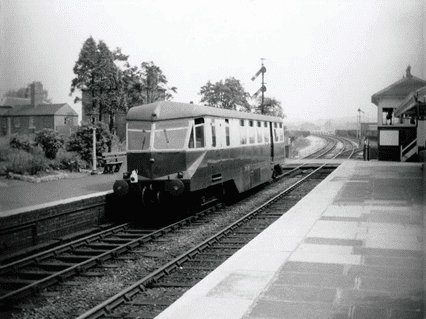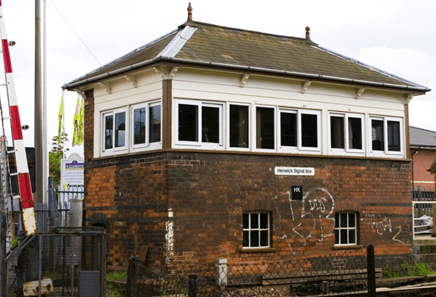Britain’s 2nd University Station: will it be Worcester? research done by and written by Jake Byrnes, Nicole Dressler, Mionna Green, Nick Stone, and Elisabeth Whittemore, edited and co-written by Heather Sykes

Background
Public transportation is often used by those who commute to school or work for reasons such as time, cost, or flexibility. Trains are a cost-effective and more environmentally friendly option than cars. Since the 1960s, the British railway system has faced numerous changes, with the Beeching Cuts being the most significant. As a result of the Beeching Cuts, hundreds of stations and lines around the UK closed. Then, in the 1990s, the railway was privatised. This, therefore, means that the railways’ infrastructure and track were passed to Railtrack and were franchised to private-sector operators. Some of the closed stations from the Beeching Cuts have reopened or are in the process of reopening.
In Worcester, UK, Henwick Station was a railway station that served a vital part of the city, the St. John’s area, near the University of Worcester. Henwick Station was the first station after Foregate Street on the line from Worcester to Malvern and Hereford. The station also serviced a branch line to Bromyard but, due to the Beeching Cuts, Henwick closed. Students and staff would have closer access to transport at the main campus in St John’s if the station was re-opened.
Currently, there are two main stations that commuter students use to get to Worcester. There is Worcester Shrub Hill, located in the east of Worcester. Then the most popular train station is Worcester Forgeate Street Station, found in the city centre. Neither of the two stations are very close to the main university campus, which might discourage some students from travelling by rail.
University Station Findings in Public
Opinions from residents, staff, and students have been gathered on the re-opening of the station. Researchers surveyed walkers in Cripplegate Park, to get the local viewpoint. 70 people engaged with the survey across the research project.
The residents’ preferred mode of transportation was to either walk or take their own car. 60% of the respondents said they would use a station in the St. John’s area.
University Station Findings in University
To find the opinions of university students and staff, the University of Worcester’s Sustainability Department created a survey. The surveys gathered information about transportation habits, and how they help the environment.
74% of students and 85.7% of staff travel to the campus between 3-5 days a week over. 42.7% of surveyed students said they would use the station and 47 students would consider switching from driving to campus to using the station. 34.8% of staff said they would use the station and around 81 staff members would consider switching from driving to campus to using the station if it were available.
These statistics are encouraging and suggest re-opening the station would provide a great sustainable link for Worcester.
Students and staff work hard to make the university campus more sustainable. Therefore, a new university station would be a great addition to make being sustainable even easier. A station near the main campus could reduce the number of cars travelling to campus every day.

University Findings with Rail Staff
Semi-structured interviews obtained opinions from key stakeholder representatives from the rail industry. This revealed what the process of opening a railway station would be like.
To prove demand for a year-round station, there needs to be significant evidence from public responses. To continue, an in-depth business case with appropriate supporting documents would also be needed. An in-depth business case includes a strategic case, economic case, financial case, commercial case, and management case.
There are guidelines on the Network Rail website for the necessary steps to create an informative business case.
Will Worcester Get the 2nd University Station?
A lot more needs to be done to secure Britain’s 2nd university station in Worcester. The business plan would need further economic cases and additional surveys. Planners would also need to finalise the financial, commercial, and management cases. The New Stations Fund would also need to be pursued to create the plan.
However, this recent research has shown that there is currently interest in re-opening Henwick Station. As the student body becomes more and more sustainably conscious, there will be more support behind this project. So, we hope that Worcester will become the second city in Britain to have a university station.
Photographs
- A train at Henwick Station’s platform in 1960, (ML048 Train at Henwick Station | The Changing Face of Worcester, n.d.)
- The remaining signal Box at Henwick Station, Railways in Worcestershire, (Adrian the Rock – Signals at Henwick and Worcester Foregate Street, n.d.)
SDGs
